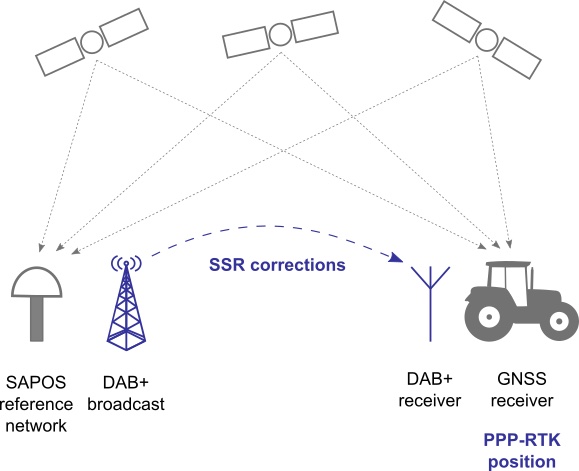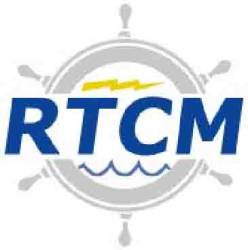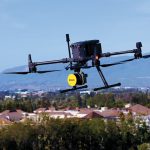The ESA-funded SSRoverDAB+ project delivered its final results in June 2023.
Speaking from his company’s headquarters outside Berlin, Alberding GmbH Owner Jürgen Alberding explained the project’s rationale: “Our aim is to increase the availability of high-accuracy GNSS corrections in rural regions using DAB+ [digital audio broadcasting] transmission. This means overcoming computational and bi-directional communication limitations of network RTK as well as computing and comparing different SSR [state space representation]-based GNSS positioning solutions.”
Modern applications in precision agriculture and in the automotive and other industries all need continuous, highly accurate GNSS position information in real time. GNSS correction data required for this is typically transmitted to users via mobile internet. Due to dead spots, the corrections are often not available to users over a wide area.
“The growing demand for precise real-time corrections puts an increasing computational and bi-directional communication burden on network RTK service providers,” Alberding said. “The provision of GNSS corrections to an unlimited number of users without significant investments into the service infrastructure therefore requires a transition to a unidirectional broadcasting approach.”
Going about it in a new way
Along with project partners Fraunhofer, Geo++ and inPosition, Alberding set out to generate a broadcast-capable PPP-RTK correction data stream in an open data format with optimized bandwidth based on an existing GNSS reference station network. They established a reliable DAB+ data transmission channel and developed and adapted precise real-time PPP-RTK positioning and sensor fusion algorithms. The Alberding A10-RTK sensor served as a development and demonstration platform for extensive testing of the overall solution.
“The A10-DAB prototype sensors have been successfully used in practical field tests,” Alberding said, “and we got a very clear impression of the complexity of future interoperability tests for the SSR data format standardization.” Also speaking at the project final presentation was Fraunhofer’s Christian Fiermann, who said, “The developed hardware works as expected. The overall performance of the system is comparable to state-of-the-art automotive solutions. Decoding is possible even under weak signal conditions, and we were able to reactivate application type for SSR data in the DAB+ standard.”
“We now want to continue this work, to develop a DAB+ receiver module in a smaller form factor,” Alberding said, “and we want to add more processing power, to allow us to run the DAB+ decoding and processing in parallel.”Next steps for the consortium include production of second generation hardware prototypes in higher volume, to expand testing to a larger number of participants, as well as development of a highly integrated board that can be produced in numbers and sold to end users and system integrators.
SSRoverDAB+ is funded under the ESA NAVISP program, aimed at supporting the development of innovative competitive products in satellite navigation and other areas of positioning, navigation and timing.





